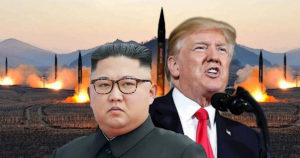Nathan Gardels is the editor-in-chief of Noema Magazine.
Trump says the summit stumbled over Kim’s demand that the United States completely lift sanctions in exchange for closing and allowing inspections of the Yongbyon complex, which produces fuel for North Korea’s bombs. Trump refused. The North Koreans, who dispute Trump’s characterization of why the talks collapsed, are in a real bind — Pyongyang had already ended its missile testing and begun de-weaponizing its nuclear capacity with the expectation of too much in return. Going forward, this half loaf will either be the detritus of a once-in-a-lifetime good-faith effort, or it will be the building block for another try. It would be foolish for either side to let this far-from-insignificant accomplishment unravel.
In The WorldPost, Siegfried Hecker and his Stanford colleagues Robert Carlin and Elliot Serbin argue that “the prevailing view in the United States is that Kim expanded North Korea’s nuclear program in 2018 despite pledging to do the opposite. But our findings paint a different picture. We have found that North Korea actually halted key elements of its nuclear program, thereby decreasing the threat posed by what was a rapidly expanding program in 2017.” Hecker is no blue-eyed academic but a former head of the Los Alamos National Laboratory that makes America’s deadly nuclear arsenal and among the few Westerners to personally inspect North Korea’s nuclear facilities.
The authors eschew a simplistic notion of what “denuclearization” means and focus on “the trade-offs among the three requisite components of North Korea’s nuclear arsenal: bomb fuel, weaponization and delivery systems.”
Through the use of satellite imagery and their own direct knowledge of North Korean facilities on the ground, they have come to this conclusion: “On the one hand, North Korea has been expanding its bomb-fuel inventory, allowing it to potentially increase the size of its arsenal. This is what we would expect to see in the absence of any specific and binding limitations. But on the other hand, North Korea has slowed its weaponization (designing, building, testing) and delivery system development, limiting the sophistication and reach of its arsenal. Our findings indicate that the latter outweighs the former, resulting in an overall decreased threat.”
Of particular importance to these scientists, Kim took the “extraordinary step” in April “of ending, not just suspending, nuclear and missile tests. … In May, Kim also took steps to destroy the nuclear testing tunnels at North Korea’s Punggye-ri test site.” What North Korea has done, they say, “seriously limits North Korea’s advances in weaponization and delivery systems … [and] greatly restricts the country’s ambitions for ICBMs, solid-fueled missiles and submarine-launched missiles, all of which are still very much in the developmental stage, not completed as Kim claimed.”
As welcome as these developments have been, the authors acknowledge, we are far from the end of the road. For Hecker and his colleagues, the aim in negotiations going forward is to “lock in the end of North Korea’s nuclear and missile tests and press for an end to its production of bomb fuel — plutonium, highly enriched uranium and tritium. This would be mostly accomplished by dismantling the Yongbyon nuclear complex and putting U.S. and international inspectors on the ground there. In addition to its uranium chemical facilities and the known centrifuge facility at Yongbyon, North Korea has at least one suspected undisclosed uranium enrichment facility elsewhere, which will eventually need to be dismantled as well.”
It is no surprise that maximalist demands from either side — total denuclearization or total lifting of sanctions at once — would lead to deadlock. That is why the Chinese have long proposed synchronized and sequenced tit-for-tat steps to build enough confidence at each stage to move forward to the next. Now that the bluster and bravado on both sides has predictably led into a cul-de-sac, it is time to try this sensible approach.





